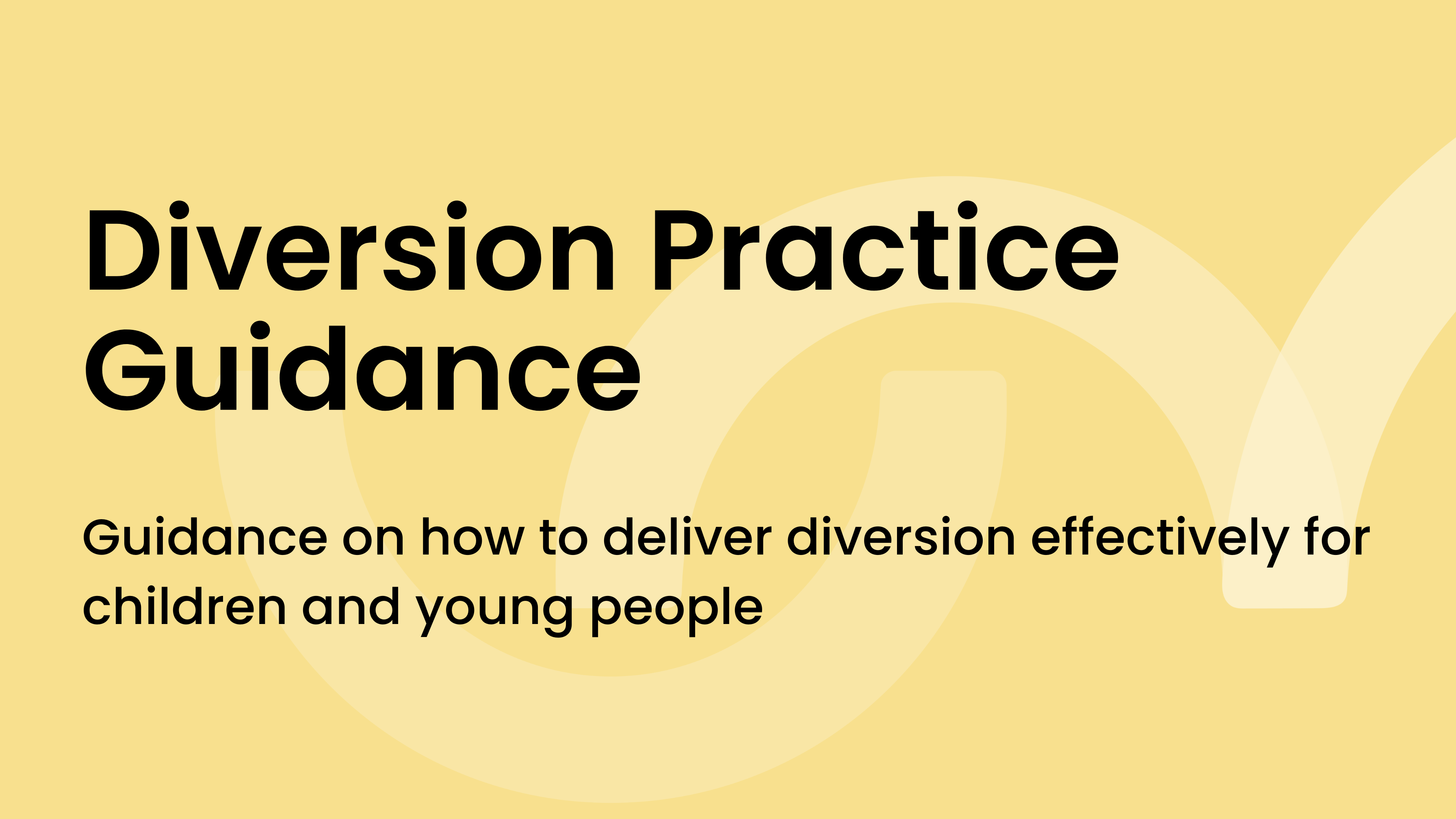Out of Court Resolution Practice Insight Creator (ORPIC)
As a leader in a youth justice partnership, we know you're committed to keeping children safe from crime and violence - but it's not always clear how best to achieve this, or what next steps to prioritise.
This free digital tool enables you to evaluate your area's out of court resolution practice against the best available evidence and practitioner insights. Once completed, you will receive immediate insights that highlight strengths and pinpoint areas for improvement.1
Why? When delivered correctly, diversion can play a key role in preventing children from reoffending in the future
Recommended actions
- Include diversion in police training
- Formalise a process whereby officers overseeing diversion report back on engagement and outcomes
- Provide a dedicated police officer to each YJS and co-locate the officer within the YJS
2
Why? Unclear, narrow or inconsistent eligibility criteria can impede access to and engagement with diversion.
Recommended actions
- Avoid criteria that are based solely on offence type or previous offending
- Use the Child Gravity Matrix to inform decision-making
- Avoid criminalising children for low-level offences
- Avoid net-widening
- Tackle disparities
- Ensure appropriate adults and solicitors are aware of the diversion offer to address inequity
3
Why? Police custody is experienced by children as harsh and punitive, fostering resentment and undermining trust
Recommended actions
- Use custody for children only when necessary
- Prioritise interviewing children outside of police custody
4
Why? Combining information from multiple agencies means that a child is more likely to receive the most appropriate outcome.
Recommended actions
- Convene a joint decision-making panel and secure appropriate membership
- Bring all relevant information to the panel to inform decision-making
- Focus on swift administration and a transparent decision-making process
5
Why? Providing support quickly following the original offence is likely to mean it is more effective.
Recommended actions
- Make the referral process as simple and straightforward as possible
- Facilitate access to support within four weeks of referral and regularly review average wait times
- Work with YJS and other relevant stakeholders to connect children to evidence-based support
6
Why? Transparent and fair decision-making can increase compliance and reduce reoffending.
Recommended actions
- Make expectations clear and ensure the consequences of non-engagement are understood
- Take a multi-agency approach to dealing with non-engagement
- Develop a clear process for victim engagement and updates
7
Why? How you do diversion (e.g. speed, quality and appropriateness of support) really matters to reducing reoffending.
Recommended actions
- Operate a robust scrutiny panel for reviewing diversion and share recommendations with everyone involved in its delivery
- Ensure a police representative of the rank of chief inspector or above attends YJS management boards
Youth justice partnerships have a lead role in preventing children's involvement in violence
Whether you are a youth justice leader, a police officer or other key stakeholder in diversion, our job is to make it easy to know what works to prevent children's involvement in violence and help you make it happen. The tool aims to make sure out of court resolutions are delivered in a way that's fair, consistent, and - crucially - effective.
Learn more
Why focus on youth justice?
When we get it right for children, everyone benefits: fewer victims, safer communities, and better futures.
Right now, at least 1 in 3 children who are arrested and cautioned or convicted go on to reoffend. But we know that with the right support, that cycle can be broken. Changing how we respond to these children means less crime, fewer victims, and brighter lives
Why focus on diversion?
- It works. Using out of court resolutions to divert children to the right services cuts reoffending. Acting quickly to connect children with effective support makes all the difference. The evidence is clear: things like cognitive behavioural therapy, mentoring, or sport programmes reduce crime. Scare tactics, like prison awareness programmes, don’t work — in fact, they can make things worse.
- We can do better. Diversion has grown over the last 20 years, but it’s not always effective. Too often, children’s vulnerabilities — like sexual or criminal exploitation — are missed at the point of arrest. Funding doesn’t reflect local needs or reward good diversion work. And, referrals to therapy or other services are still too slow.


Our Diversion Practice Guidance - which was co-authored by the Centre for Justice Innovation - provides seven key evidence-based recommendations on how to deliver out of court resolutions effectively for children.
Learn more